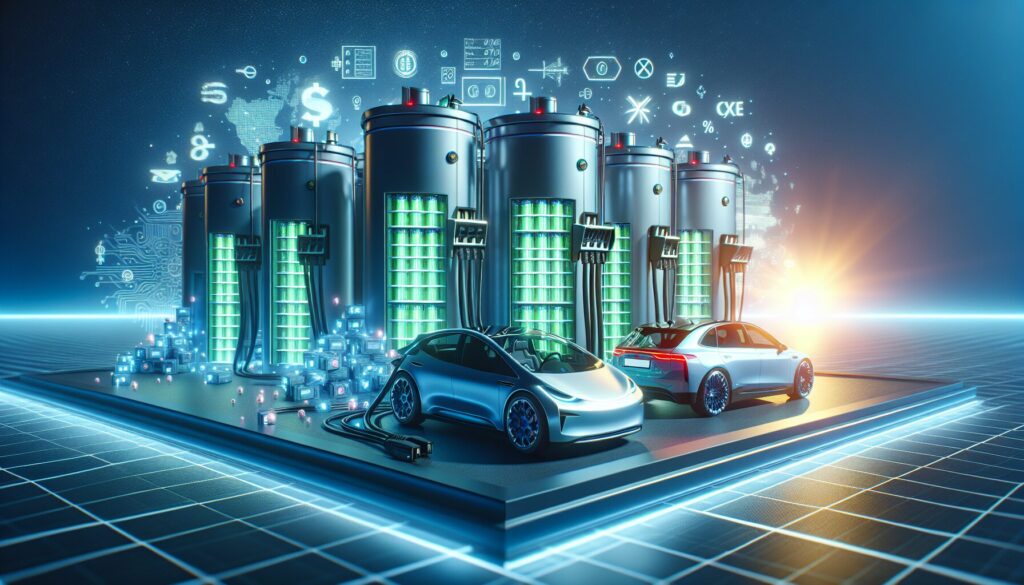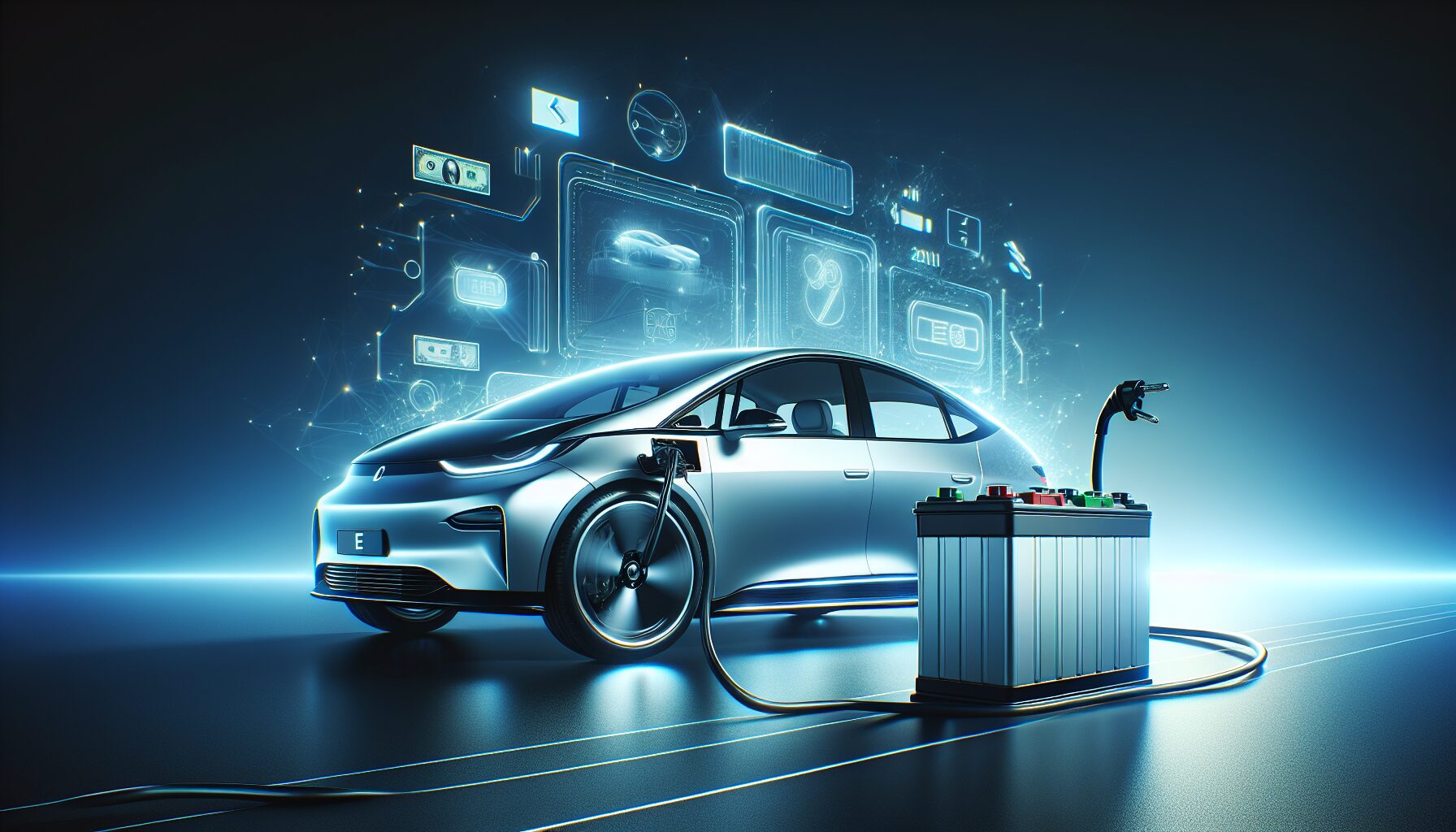Hey there, friends! Let’s dive into something as electrifying as it is essential—EV battery life cycles. When I first started exploring this topic, I was amazed by the complexity behind those seemingly simple batteries. Did you know that the Battery State of Health (SOH) is crucial for assessing how much life is left in an EV battery? It’s like checking your car’s health before a long road trip. Another fascinating aspect is the Battery Management System (BMS), which is vital for second-life applications. This nifty system ensures the battery operates safely and efficiently. And for those of you who enjoy getting into the nitty-gritty, the Coulomb counting method is often used to estimate a battery’s capacity. This method measures the charge going in and out, giving us a clear picture of its performance. Companies like Renault are pioneering in this field, transforming how we think about battery use.
Related: Everything You Need to Know About Second-Life Applications for Electric Vehicle Batteries
The Role of Science in Battery Reuse
Science plays a magical role in giving electric vehicle batteries a second lease on life. Imagine a world where your car’s battery doesn’t end up as waste but instead powers something entirely new. It’s like breathing new life into an old friend. I remember tinkering with a friend’s electric vehicle, and we marveled at the Battery Management System (BMS). It’s crucial for ensuring that each cell in the battery pack remains balanced and healthy, even as it finds a new purpose.
Now, you might wonder how scientists know a battery’s capability in its second life. Well, they rely on State of Charge (SOC) estimation algorithms. These nifty algorithms help determine how much juice a battery has left, which is vital for repurposing. When we talk about battery reuse, accuracy in SOC is like knowing exactly how much cake you have left for your party. You wouldn’t want to run out halfway through!
Thermal Management’s Importance
Thermal management is another crucial factor. Proper heat control can reduce battery degradation, making them last longer. It’s similar to keeping your favorite cuppa at the perfect temperature. Scientists ensure the battery doesn’t overheat, maintaining performance in its second life. The UK has some exciting projects in this area, with organizations like Faraday Institution leading the charge in battery innovation.
Furthermore, the science of battery reuse also includes developing new materials. Researchers are constantly on the lookout for breakthroughs that make these batteries more efficient. For instance, University of Oxford has some fascinating work underway. They’re exploring materials that could potentially revolutionize how we think about battery reuse.
So, next time you see an electric vehicle, think about the exciting journey its battery might take after its first life. From powering homes to supporting renewable energy grids, the possibilities are endless. Science truly makes this recycling dream a reality.
Applications of Second-Life EV Batteries

Imagine you’re sipping a cup of tea while pondering the future of energy. Second-life EV batteries are playing a big role in that future, transforming the way we think about power. These batteries, once retired from their vehicular duties, have a surprising number of applications. One exciting area is renewable energy storage. Imagine a home solar setup in the UK where the sun isn’t always reliable. Second-life batteries store excess energy generated during sunny days, ensuring you have power when the clouds roll in. This doesn’t just cut your electricity bills; it optimizes energy usage through smart Battery Management System (BMS) algorithms.
Another fascinating application is in grid stabilization. These batteries can provide backup power during peak hours, helping to balance supply and demand. It’s a bit like having a reserve of energy on standby. This is crucial, especially with the UK’s increasing reliance on renewable energy sources. The National Grid, for instance, can integrate these batteries to ensure a stable power supply, even as wind and solar output fluctuate.
Community and Commercial Solutions
Beyond individual use, second-life batteries are making waves in community energy projects. For example, in some UK towns, local councils are using these batteries in public buildings to reduce energy costs. This approach not only saves money but also promotes sustainability. Additionally, commercial enterprises are catching on. Companies are integrating these batteries into their operations, reducing their carbon footprint and enhancing energy efficiency. A good friend of mine works with a company that recently optimized their warehouse lighting using these batteries, coupled with advanced State of Charge (SoC) estimation algorithms. Their energy savings were significant!
In all these applications, second-life batteries offer a fantastic combination of sustainability and cost-effectiveness. The Faraday Institution has noted that reusing EV batteries could greatly diminish waste and resource consumption. Furthermore, Reuters reported that the global market for second-life batteries is expected to grow significantly, driven by these innovative uses. It’s an electrifying time to be part of this energy revolution!
Environmental Benefits of Battery Repurposing
Repurposing electric vehicle batteries for a second life is a game-changer for our environment. When I first tinkered with State of Charge Estimation Algorithms, I realized how optimizing energy storage could make a massive difference. It’s like giving batteries a new lease on life while reducing waste and conserving resources. Such efforts significantly cut down on the need for fresh raw materials, thereby lessening the environmental burden of mining and processing.
Moreover, optimizing a Battery Management System (BMS) ensures these second-life batteries function efficiently in new roles. From powering homes to stabilizing the grid, they help reduce our carbon footprint. This clever reuse helps decrease greenhouse gas emissions, aligning beautifully with the UK’s climate change goals. Fun fact: Electrochemical Impedance Spectroscopy (EIS) is often used to assess battery health, making sure they’re fit for their new purposes.
Reducing E-Waste and Promoting Sustainability
Every time a battery gets a second chance, it’s one less item heading to a landfill. This reduction in electronic waste is crucial for protecting our environment. By repurposing, we’re not just saving space but also preventing harmful chemicals from seeping into the soil. Organizations like Faraday Institution are at the forefront of this revolution, ensuring that battery repurposing aligns with sustainable practices.
Ultimately, second-life battery applications support a circular economy. They turn potential waste into valuable resources. Curious about how these applications work in detail? Be sure to explore our insights on second-life electric vehicle battery applications. By embracing these innovative solutions, we’re taking big strides toward a cleaner, greener future.
Challenges and Solutions in Battery Reuse

When I first started exploring the world of second-life EV batteries, I was blown away by the technical challenges involved in their reuse. It’s not just about taking an old battery and sticking it into a new application. Oh no, it’s a bit more intricate than that! One of the main hurdles is accurately estimating the remaining capacity of these batteries. State of Charge (SOC) estimation algorithms are crucial here, but they need to be top-notch to ensure reliability. It’s like trying to measure the exact amount of juice left in a lemon—tricky but essential for making the best lemonade!
Another challenge is integrating these batteries into a new Battery Management System (BMS). This is like trying to fit a square peg into a round hole, as the new system must understand the quirks and characteristics of the reused battery. You know how sometimes you have to fiddle with a new gadget to get it to work just right? It’s kind of like that. The BMS needs to be adaptable and smart enough to manage the reused batteries effectively.
Technical Considerations and Solutions
Now, let’s talk about Coulombic efficiency. This is a biggie! Measuring this efficiency helps ensure that the battery can perform its tasks without losing too much energy in the process. It’s a bit like ensuring a car engine runs smoothly without wasting fuel. This is where advanced techniques like Electrochemical Impedance Spectroscopy (EIS) come into play. They provide insights that are invaluable for maintaining battery health during their second life.
Of course, organisations like the Faraday Institution are at the forefront of developing innovative solutions. They explore new ways to address these challenges, ensuring that second-life battery use is not only feasible but also efficient and sustainable. By tackling these technical challenges head-on, we can maximize the benefits of reusing EV batteries and contribute to a more sustainable future.
Future Prospects for Second-Life Batteries
Isn’t it exciting to think about the future of second-life batteries? These powerhouses have the potential to revolutionize how we store and use energy. Just the other day, I was chatting with my mate over a cup of tea about how these batteries are giving us a glimpse into a more sustainable future. We were particularly intrigued by how advanced SoC Estimation Algorithms are making it easier to predict battery performance in their second life. It’s like watching a gripping sequel where the main character gets a new lease on life!
One of the most promising prospects is their use in renewable energy storage. Imagine a world where your home is powered by solar panels, and any excess energy is stored in second-life batteries. These batteries, once part of an electric vehicle, could now be the backbone of our energy independence. The Battery Management System (BMS) plays a crucial role here, ensuring that these batteries operate efficiently and safely in their new roles. It’s a bit like having a reliable co-pilot who’s always got your back.
Community Impact and Technological Advances
Communities across the UK could benefit immensely from these advances. Local councils and businesses are already exploring ways to integrate second-life batteries into community projects. For instance, using Electrochemical Impedance Spectroscopy (EIS) to assess battery health can help in making informed decisions about deployment in large-scale energy projects. Furthermore, initiatives by organizations like the Faraday Institution are pushing the envelope on research and development, ensuring that these batteries are not just a fleeting trend but a sustainable solution.
Moreover, advancements in coulombic efficiency are helping to extend the life of these batteries even further. It’s like squeezing every last drop out of a lemon, only better because it contributes to a greener planet. As we move forward, it’s clear that second-life batteries are more than just a stopgap; they’re a crucial component of our sustainable energy future. So, here’s to the exciting road ahead, with second-life batteries leading the charge!
Conclusion
In essence, the journey of second-life EV batteries exemplifies the power of innovation and sustainability, transforming what was once considered waste into a vital component of our future energy landscape. These batteries not only extend their utility beyond their initial use but also contribute significantly to environmental conservation and energy efficiency. As we continue to embrace these advancements, we’re not just optimizing energy use but also paving the way for a cleaner, greener future. Here’s to powering up a sustainable tomorrow!
Continue Exploring
Unlock the future of sustainable energy with our comprehensive guide on giving EV batteries a second life. Dive into innovative methods and impactful solutions that make a difference.
Frequently Asked Questions
What are the environmental benefits of second-life EV battery use?
Second-life EV battery use significantly reduces waste by giving electric vehicle batteries a new purpose after their primary life in vehicles. This practice helps lower the demand for new raw materials, decreases landfill contributions, and reduces the overall carbon footprint associated with battery production and disposal.
How does second-life EV battery use impact the renewable energy sector?
Second-life EV batteries provide a cost-effective solution for energy storage in the renewable energy sector. They can store excess energy generated from renewable sources like solar and wind, ensuring a stable energy supply even when production is low, thereby enhancing grid stability and efficiency.
What are the typical applications for second-life EV batteries?
Second-life EV batteries are commonly used in stationary energy storage systems, including home energy storage, commercial energy backup, and grid stabilization. These applications take advantage of the remaining capacity in these batteries to provide reliable and renewable energy solutions.


Leave a Reply